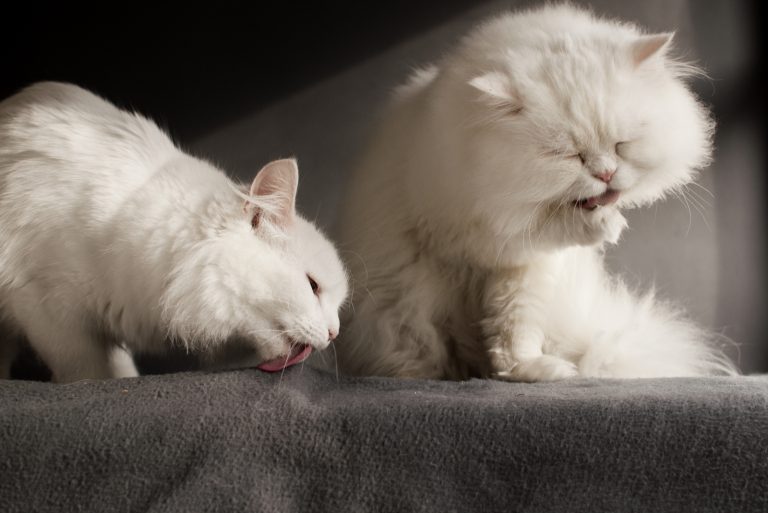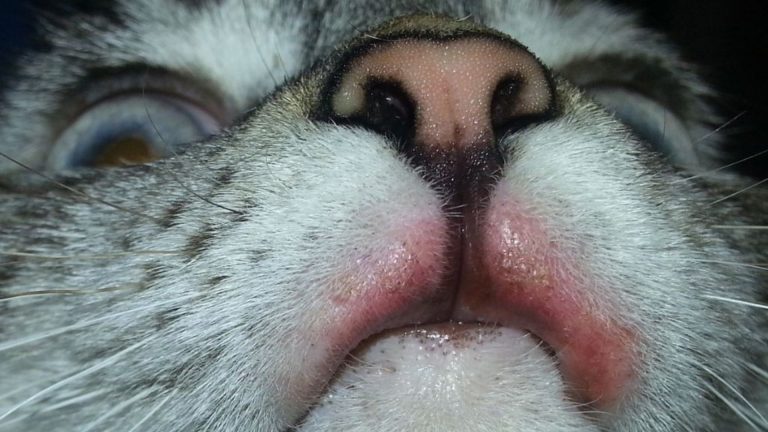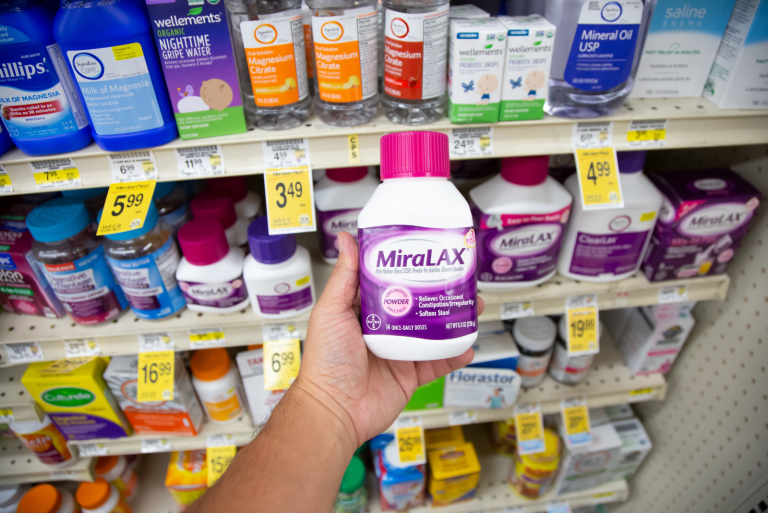How Do Cat Abscesses On Tail Occur? What Can You Do To Help?
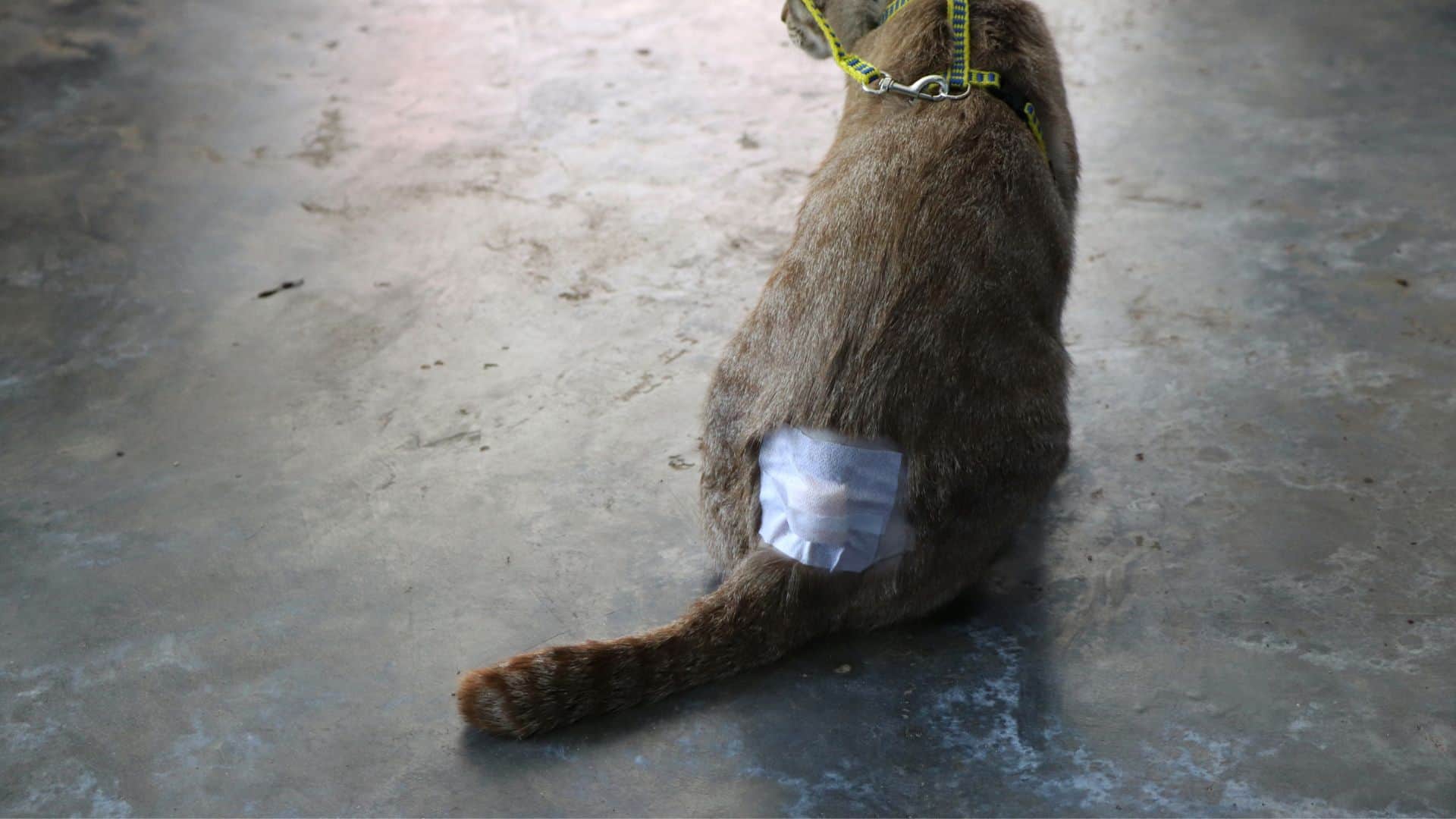
Has your cat been acting strange in the last few days? You go in for a fur scan, and there it is – an abscess. Even though you’re not picking at your cat’s scab or a lump you found, your cat reacts angrily, even to the slightest touch.
This is because cat abscesses on the tail, head, or anywhere on your cat’s body are uncomfortable. They can be swollen as well, which indicates some kind of infection.
If you’ve noticed a cat’s abscess on tail, there’s usually nothing to worry about since it’s the least dangerous place for an abscess. Read on to learn more about cat abscesses and what you can do to help.
Cat Abscess On Tail, Limbs, Head…
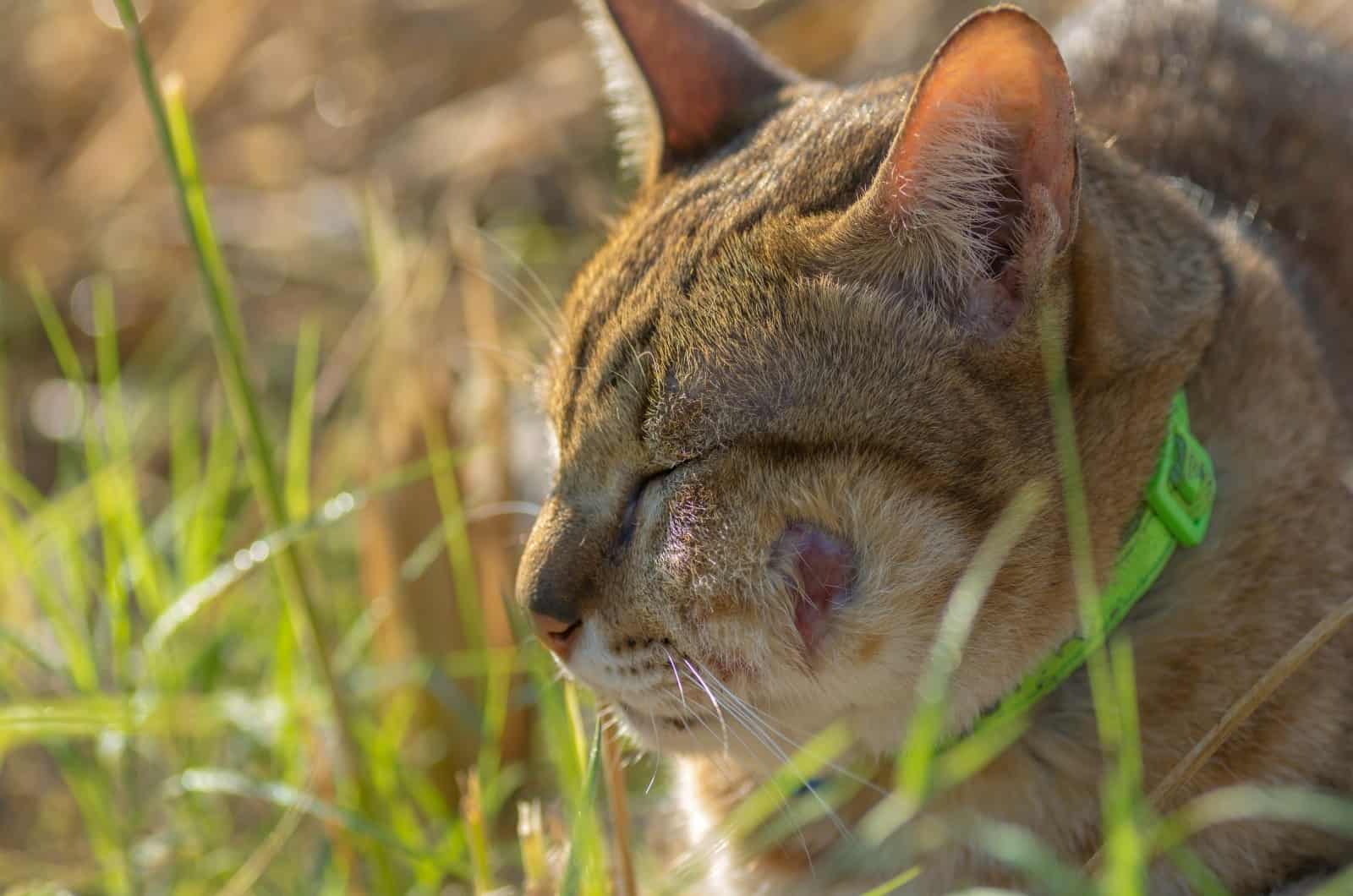
When bacteria enter your cat’s wound, an abscess forms. Bacterial colonies are found in the lips and nails of feral cats and other stray animals and are transmitted through biting.
Cats heal rapidly, so the new skin traps the bacterium and typically heals over it. The infection beneath the skin eventually fills with pus, putting pressure on the tissue above it.
The abscess may ultimately rupture and produce infected pus, making the cat’s wound more contagious. Cat abscesses may be harmful if left untreated.
The bacterial infection can spread to other regions of the cat’s body, including the organs if it becomes internal rather than external.
What Is An Abscess?
An abscess is a small accumulation of pus, which is a sticky, stinky, yellowish fluid that occurs at the area of infection.
Although pus contains some cellular waste and dead tissue, it is mostly made up of white blood cells that have been called by an infected animal’s immune system to fight against invading bacteria or other pathogens.
An abscess is defined as a pocket of pus underneath the skin filled with pus that develops as a result of an injury. This can happen both inside and on the outside of the body.
The most common cause of cat abscesses and wound infections is the outcome of a catfight. Cats are inherently territorial creatures who want to increase the limits of their domain.
Even if they’ve been spayed or neutered, they’ll do their utmost to defend the space surrounding their home. Depending on where you live, this might include encounters with possums, raccoons, wild cats, and other creatures.
However, your cat can also be wounded by inanimate things such as twigs, fence posts, and thorns.
Two Main Distinctions

If a cat walks on a thorn, a splinter of wood, or a piece of glass, an abscess may form at the site of the puncture injury.
However, abscess-producing illnesses in cats are mainly caused by cat bites because the bacteria that cause infection are commonly found in a cat’s mouth. These bacteria are easily transmitted when another cat’s sharp teeth penetrate your cat’s fragile underlying tissue.
Unneutered males, particularly those permitted to wander freely outside, are the most common targets. If the abscess is on your cat’s face, your cat has most likely won its battle with another animal. If the abscess is near the tail, it implies your cat was fleeing the battle when it was injured.
External Abscess
While abscesses can form anywhere on an animal’s body, they are most commonly found on the limbs, head, base of the tail, and back. An owner who interacts with his or her cat on a regular basis is likely to notice a concerning lump.
However, in longhaired cats, the skin lump may remain undetected until it has grown to an advanced degree. The size of an external abscess is determined by the position of the infection-causing injury and the amount of afflicted tissue.
For example, due to the joints and thin skin, a bite wound on the face cannot become very large. However, if a cat gets an abscess on the chest, where there is a great deal of loose skin, it can grow and grow. It is not uncommon for it to grow to the size of your fist.
Internal Abscess
Internal pus-filled eruptions are also possible. A penetrating wound, for example, might penetrate a cat’s liver, kidney, or gut wall.
Although the injury on the skin surface may heal smoothly, an abscess may form within the body, and infections may become apparent only when the cat develops a fever, gets lethargic, and loses appetite.
If an internal abscess is not treated and ruptures, germs, and pus enter the circulation. The cat gets septicemic due to all the poisons running through its body, which can kill it.
If the abscess ruptures externally, the pus will drain, and the injury will heal on its own if it is small enough.
Treatment
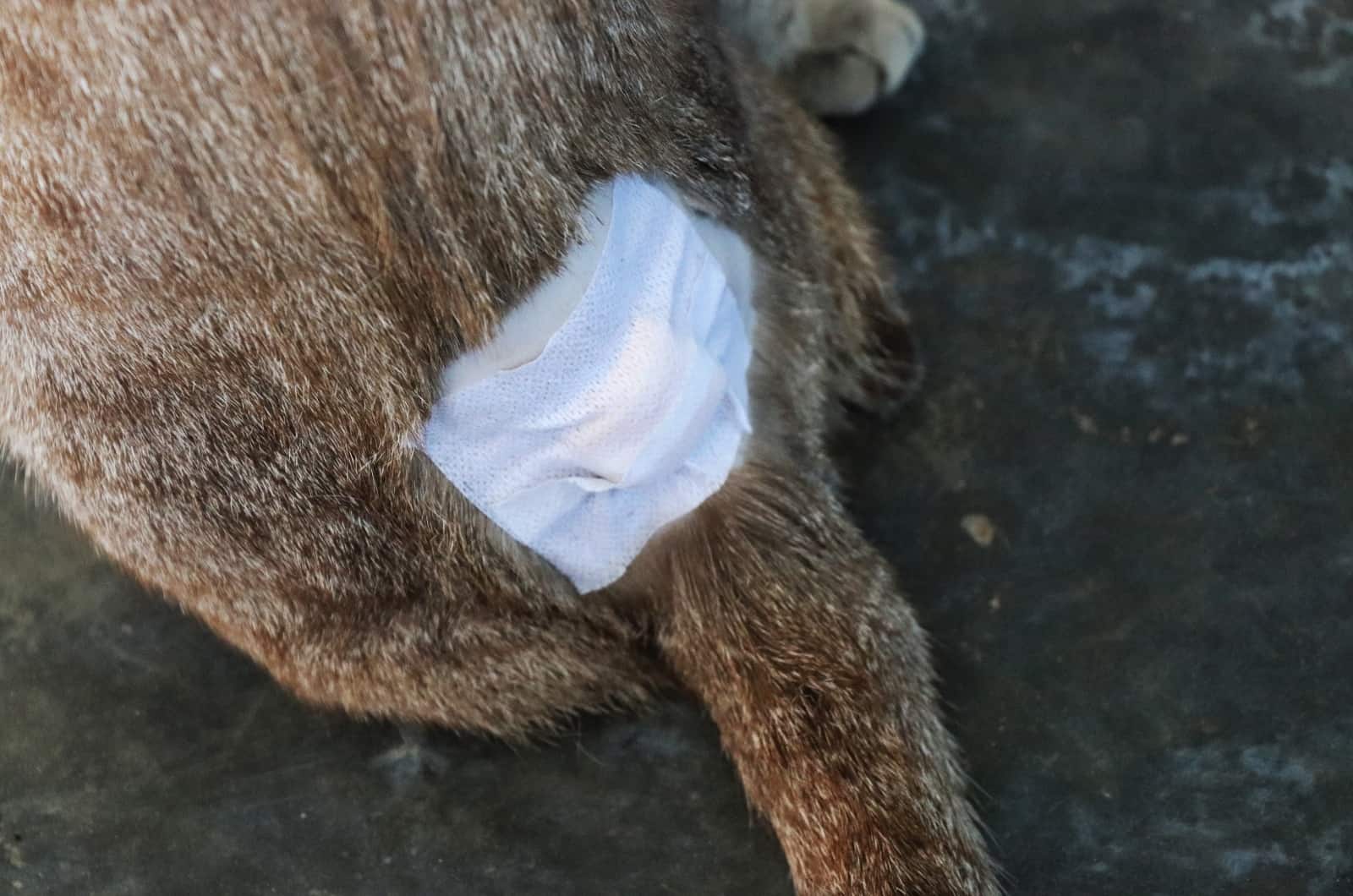
Abscesses are painful localized wounds that cats can get after being scratched or bitten by another cat or animal or if their skin gets penetrated by an item. When germs reach deep tissue and cause an infection, an abscess occurs.
The infection spreads over time, increasing pressure and eroding the underlying skin. The skin may eventually split apart, releasing pus and diseased debris.
It is critical to care for your pet’s abscess because if it is not properly cleaned and treated with the appropriate medicine, the infection can spread to other areas of the body, including the organs. This is why it is necessary to get professional treatment!
We’ve just had an owner come in with a cat that had an abscess on its tail. I couldn’t take a photo of him afterward because the poor guy was really scared of us.
Luckily, everything is OK now, so we can have a laugh at the photo of him not wanting to get out of the box when they got to the clinic.
How To Identify An Abscess

In all that hair, an abscess might be difficult to spot. Furthermore, because cats recover so rapidly, you may never notice a puncture hole in the first place. It’s moments like these that we wish our feline companions could speak and tell us what’s hurting them.
Fortunately, your cat speaks their own language, and it’ll let you know if they have an abscess. Wherever the abscess forms, be it a cat abscess on tail, its head, or anywhere on your cat’s body, the following indicators will help you recognize when your cat has an abscess:
• Your cat is more sluggish than normal.
• Your cat has a high temperature.
• You can feel a bulge on your cat’s body, which is either hard or spongy.
• There is blood or foul-smelling discharge or foul-smelling pus in the infected area.
• Your cat seems resistant to your usual cuddles or typical stroking or brushing, particularly in a specific spot.
• Your cat grooms itself excessively in one region.
• Your cat’s skin has an open wound or a painful swelling.
• The fur at the potential infection spot is matted, or is falling out.
• Your cat is walking unusually or limping.
Cat bites are most usually found on the head, the cat’s limbs, or the base of the tail. If you are unable to locate an abscess, these are helpful areas to begin your search.
Any of these symptoms might indicate an abscess. However, it is always best to consult with your vet to clarify the source of your cat’s suffering.
How To Treat A Cat Abscess On Tail
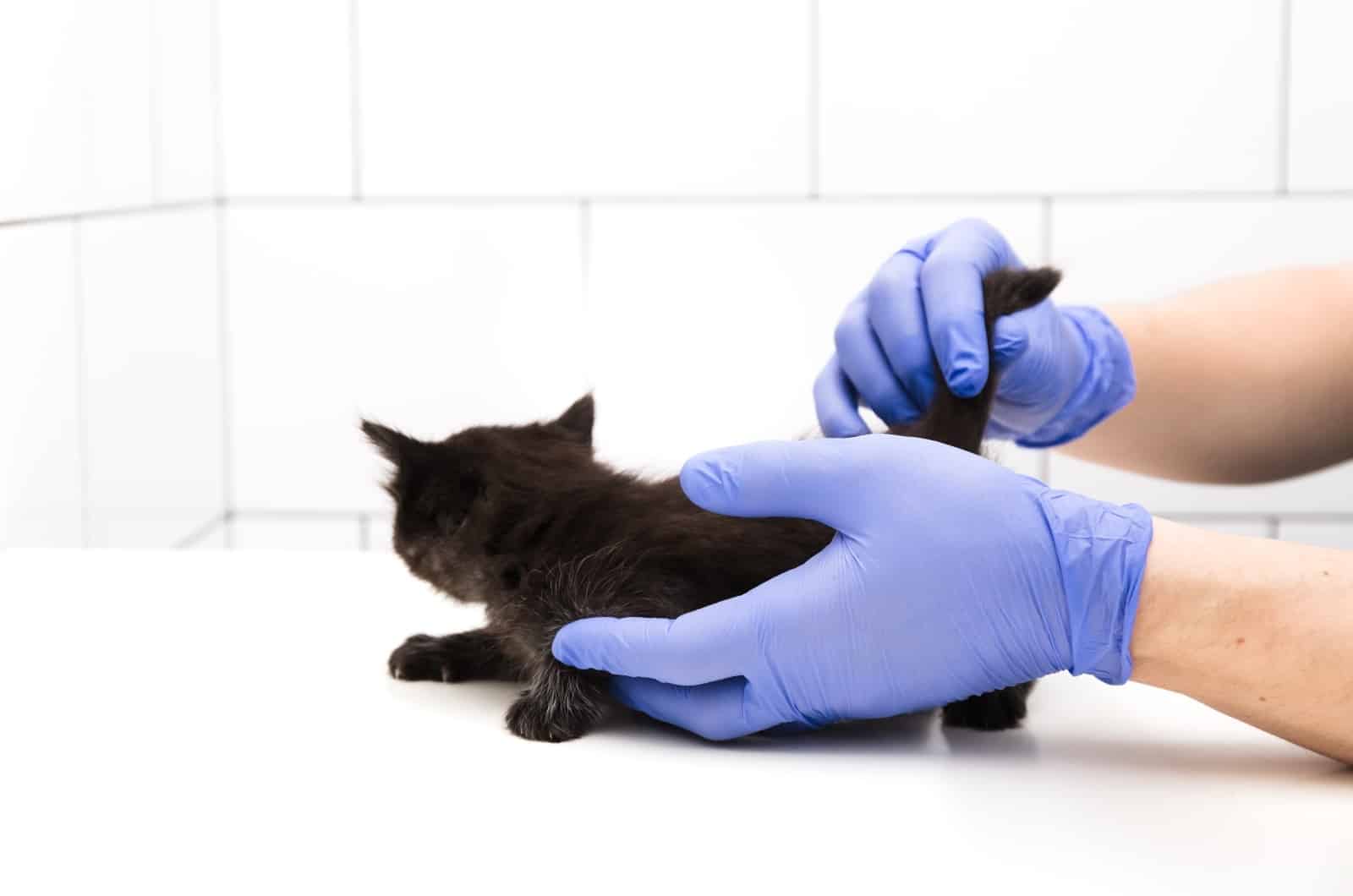
Now that you understand what an abscess is, how it occurs, and how to recognize one in your cat, it’s time to treat it.
You need to go to your vet, but while you wait for your appointment time, there are some things you can do at home to safely and successfully treat a cat abscess and prevent infection from spreading to other parts of the body.
1. Trim as much hair away from the area as possible to better see the severity of the wound.
2. Apply a warm compress or a clean towel dipped in warm water to the affected area. Keep it on the injury for about a minute or two. You can also use animal skincare wash to clean the area of the wound.
Note: It is not suggested to apply hydrogen peroxide on open wounds since it may cause more tissue damage. Never apply alcohol to an abscess.
What To Expect At The Veterinary Clinic
When you take your cat to the veterinarian, the physician will usually undertake a comprehensive inspection of the abscess, as well as your cat’s general health. If your cat’s abscess is open and leaking, your vet may be able to treat it without anesthesia.
However, if the abscess has not yet opened, your veterinarian may need to put your cat under sedation and puncture the abscess.
Pus samples will be taken and sent to the laboratory so that your vet can better determine which medication will be most effective against the illness or infection your cat has.
In certain circumstances, the vet may need to install a drain to keep the abscess open. Keeping the drain as clean as possible is critical. The veterinarian normally removes the drain after three days.
When your cat gets back home, confine her until she heals. You should keep your cat somewhere in your home that’s easy to clean, like the bathroom.
Just make sure it is dry and warm inside, and provide your feline friend with everything it needs (like a litter box, food, clean and fresh water, and a comfy bed).
Wipe the wound clean with a clean towel dipped in warm water. Continue cleaning the area of the wound until all visible pus has been removed.
Inform your veterinarian about any drugs or supplements your cat is presently taking so that your vet may choose the proper treatment option for your pet’s specific condition.
Keep In Mind…
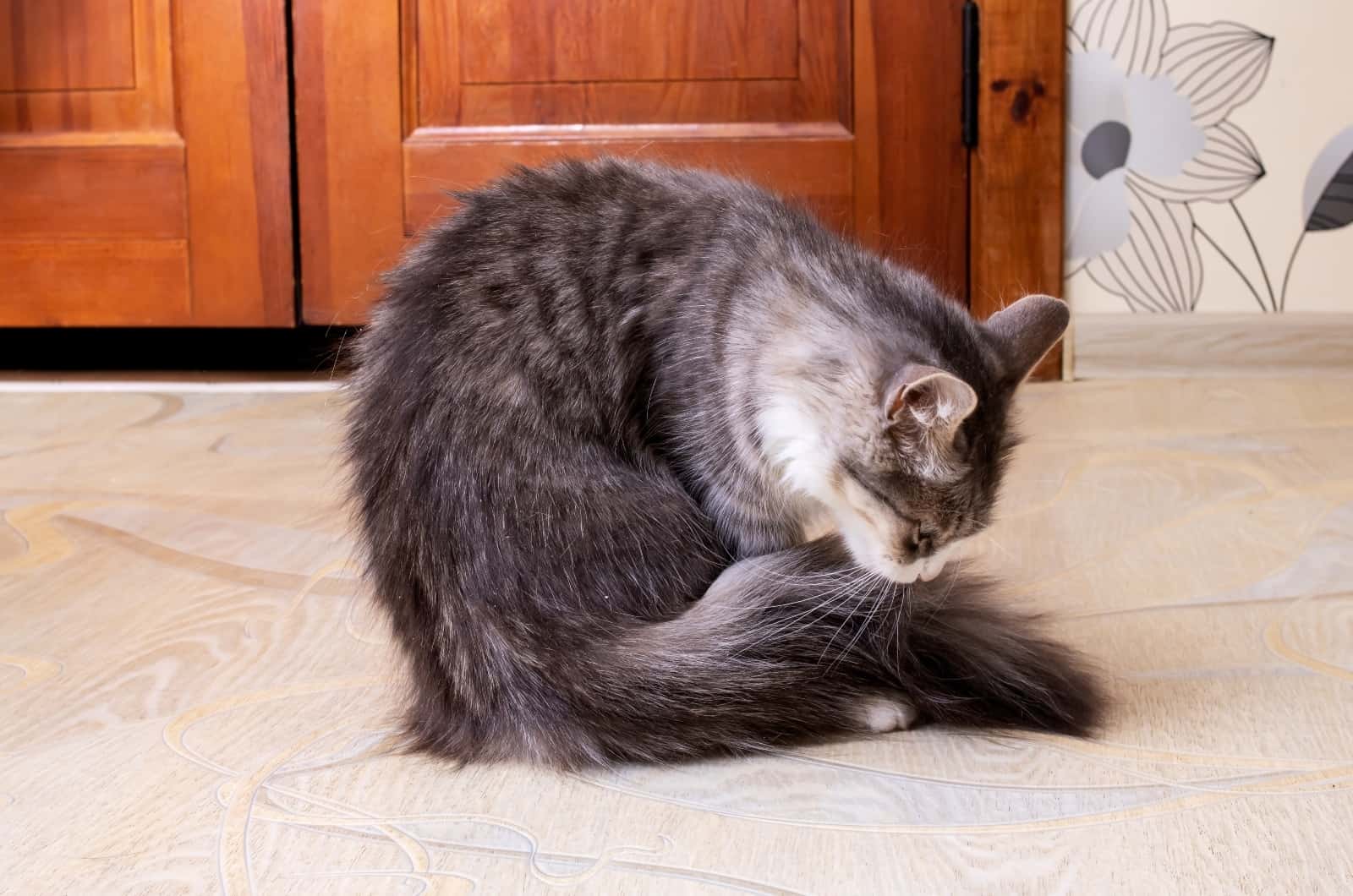
Feline leukemia (FeLV) and feline immunodeficiency virus (FIV) are highly infectious illnesses spread by bite wounds.
• Testing, which may be done with a simple kit in your veterinarian’s clinic, should preferably be done after sixty days or more have passed after the bite.
Outdoor cats, regardless of vaccination status, should be checked for these viruses on a yearly basis. If you haven’t tested your cat in the previous year, we recommend testing at the time of abscess treatment.
• This test will not rule out any illness caused by this bite, but it will look for infections caused by previous bites. If your cat has never been vaccinated against rabies, it is vital to ensure that this vaccination is up to date.
• Rabies is spread through bite wounds, and because there is no effective therapy for either animals or people, it is critical to consider this basic preventative measure.
For the home care afterward, make sure you know how to administer medication, do hot packing, and deal with rubber drains if your pet has them.
Most abscesses heal within a week; however, bigger abscesses may take longer. If your cat’s abscess does not heal within a week, contact your veterinarian.
Prevention
Neutering is the most effective strategy to avoid conflicts and, therefore, to avoid abscesses as well. Cats who have been neutered are less inclined to roam around and fight.
Indoor cats are also at a much lower risk of abscesses than outdoor cats, but you never know where your little rascal can earn a puncture wound, so be on the lookout.
Pay attention to your cat and its behavior, and have regular cuddle sessions so you’ll be the first one to notice if there is an abscess forming. Take your cat to the vet for regular check-ups, and it will be safe.
FAQ
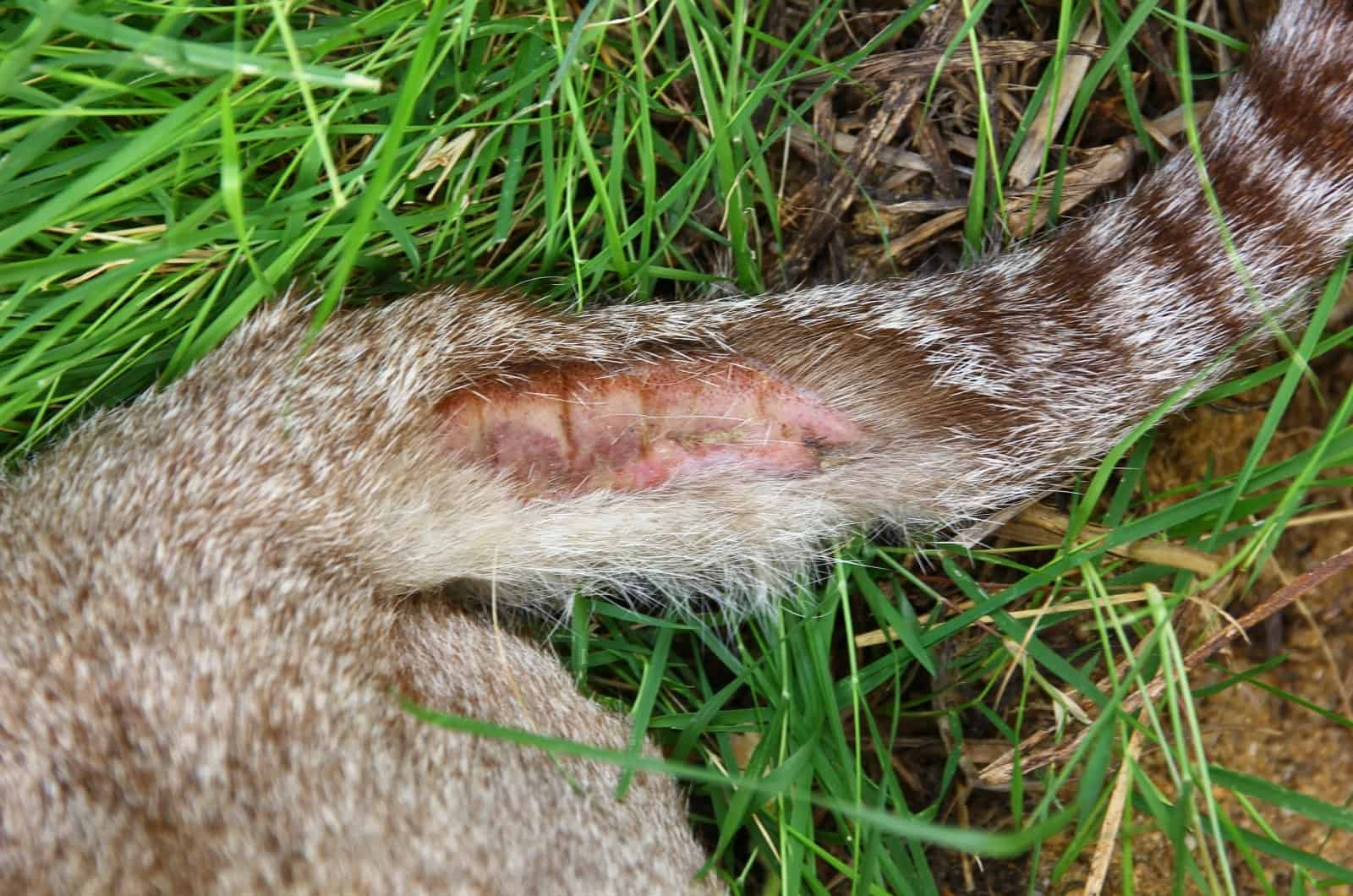
How do you treat an abscess on a cat’s tail?
The objective is to eliminate the pus pocket, either surgically or by draining and cleaning. If a foreign item caused your cat’s abscess, it is vital that it be removed completely, or the abscess will reoccur.
For successful and safe treatment, you must go to the vet. However, there are some things you can do before you take your cat to the clinic. Trim, wipe, and wash.
• To see the degree of the injury, remove as much hair as possible from the injured area.
• Use a warm wet cloth to wipe the injured area. Press it against the wound for about a minute.
• Clean the area with animal skincare shampoo or animal-safe disinfectant.
Will a cat’s abscess heal on its own?
Some abscesses will rupture and heal on their own if left untreated. Most abscesses heal within a week; however, bigger abscesses may take longer. If your cat’s abscess does not heal within a week, contact your vet.
However, if left untreated, some abscesses can cause serious, and sometimes deadly, illnesses, such as FelV. Symptoms include limping or pawing at the afflicted region, as well as signs of discomfort. This is why it’s always best to take your cat to the vet.
Note: In case of a cat tooth abscess, contact the vet immediately.
How long does it take for a cat’s abscess to heal?
With proper treatment, most cat abscesses, like the one on its tail, for example, heal in two weeks. If an abscess does not heal within this time, your cat may have a strong bacterial infection, FIV, or FelV, all of which can interfere with your cat’s immune system and recovery.
Final Words
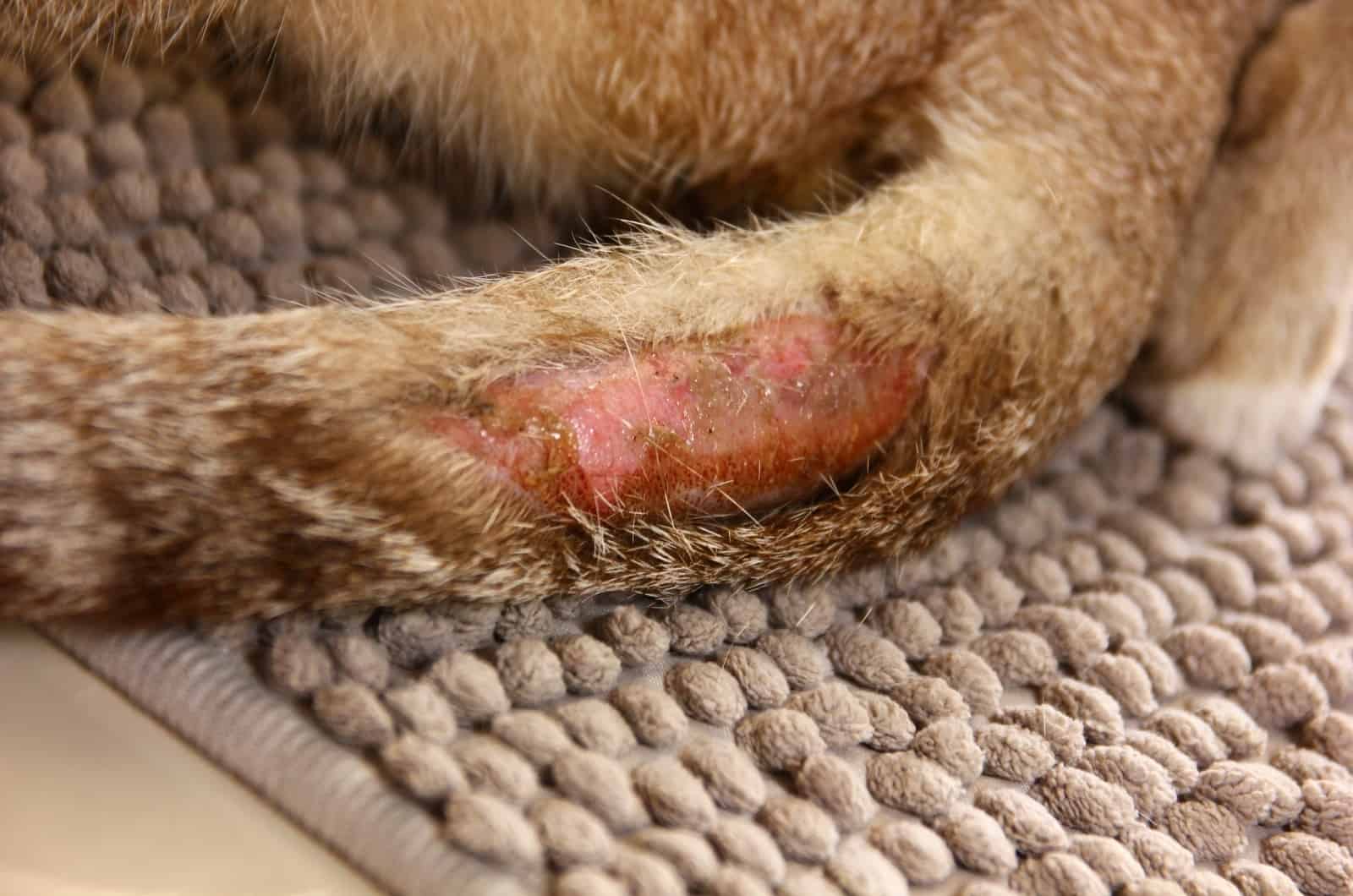
All in all, a cat’s abscess on tail is not an alarming situation. However, some abscesses in cats can be pretty severe, so it’s always best to report any bite mark you notice to your vet.
Most cat abscesses, such as an abscess on the cat’s tail, heal within a week or two with proper treatment.
If your cat’s abscess does not heal within this time frame, your cat may be suffering from a severe infection, FeLV, or FIV, all of which can impair your cat’s immune system and healing process.
If you notice any of the symptoms I’ve listed above, contact your vet! Even if it is in vain, one trip to the vet’s office is better than leaving your cat and allowing its condition to worsen.
Related Articles:
• How To Deal With A Ruptured Cat Abscess: Burst Hole Healing
• Helping My Cat With Broken Tail – How To Treat It Properly?



